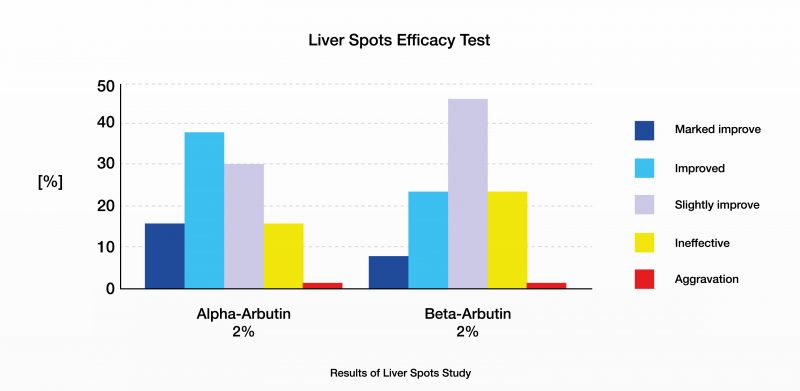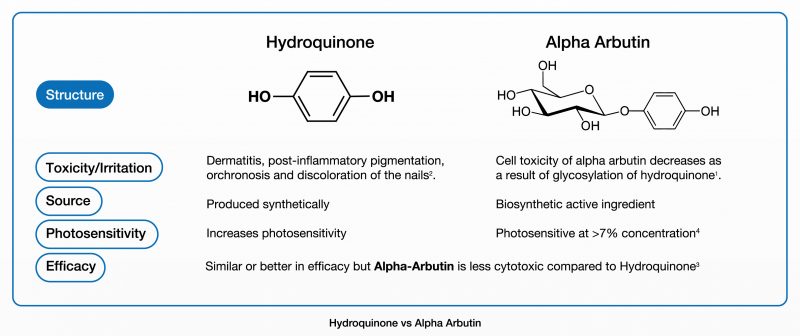Causes of Pigmentation
The skin colour is determined by the interaction of different colorants. The brown coloration results from the pigments eumelanin and phaeomelanin, which are produced in special epidermal cells called melanocytes. The enzyme tyrosinase, usually present in an inactive form, is formed in these melanocytes. Its activation by UV light triggers off melanogenesis, a complex series of enzymatic chemical reactions which finally lead to the formation of melanins, leading to undesirable discolorations on the surface of skin that typically manifests as age spots, melasma or freckles.
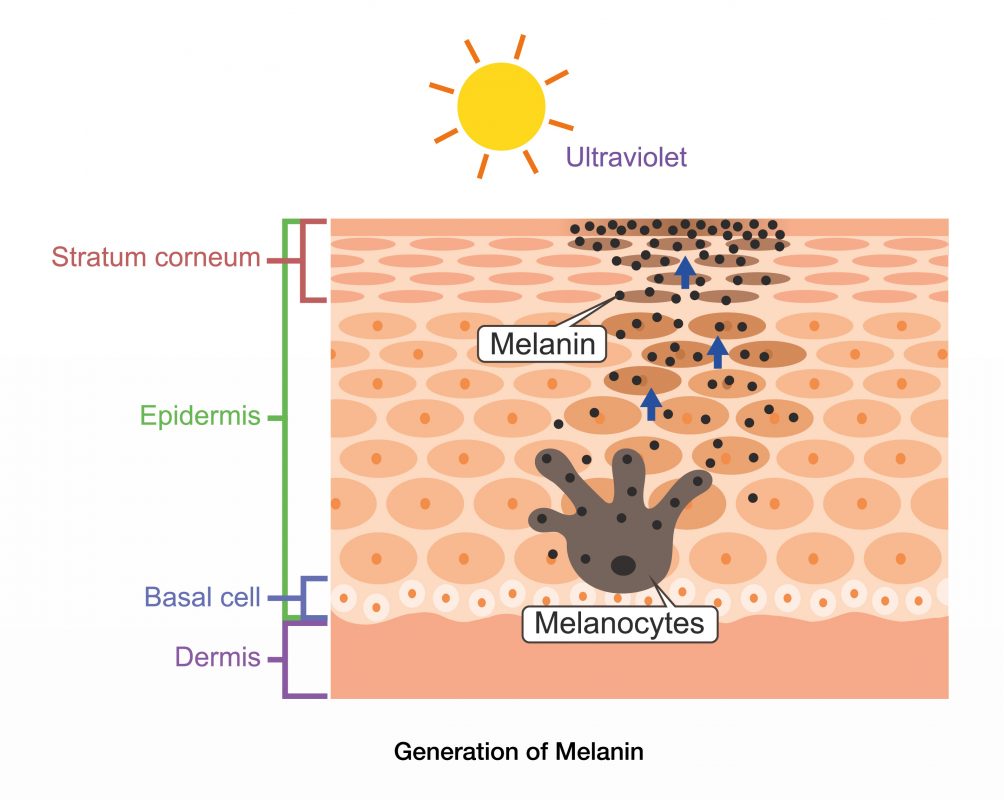
Mechanism of Action
Arbutin is glycosylated hydroquinone that comes in 2 forms, the Alpha-Arbutin and the Beta-Arbutin. Arbutins are considered to be the ideal skin lightening agent as it assists in the blocking of epidermal melanin biosynthesis. It helps to block epidermal melanin biosynthesis by inhibiting enzymatic oxidation of Tyrosine and Dopa.
Alpha-Arbutin has been proven to have superior results, even when compared to its chemically-similar molecules, hydroquinone and beta-arbutin. In addition to higher efficacy, it also boasts a better safety profile compared to hydroquinone, and is more stable when compared to beta-arbutin. These characteristics make it the go-to active for lightening of complexion and minimization of dark spots on the skin.
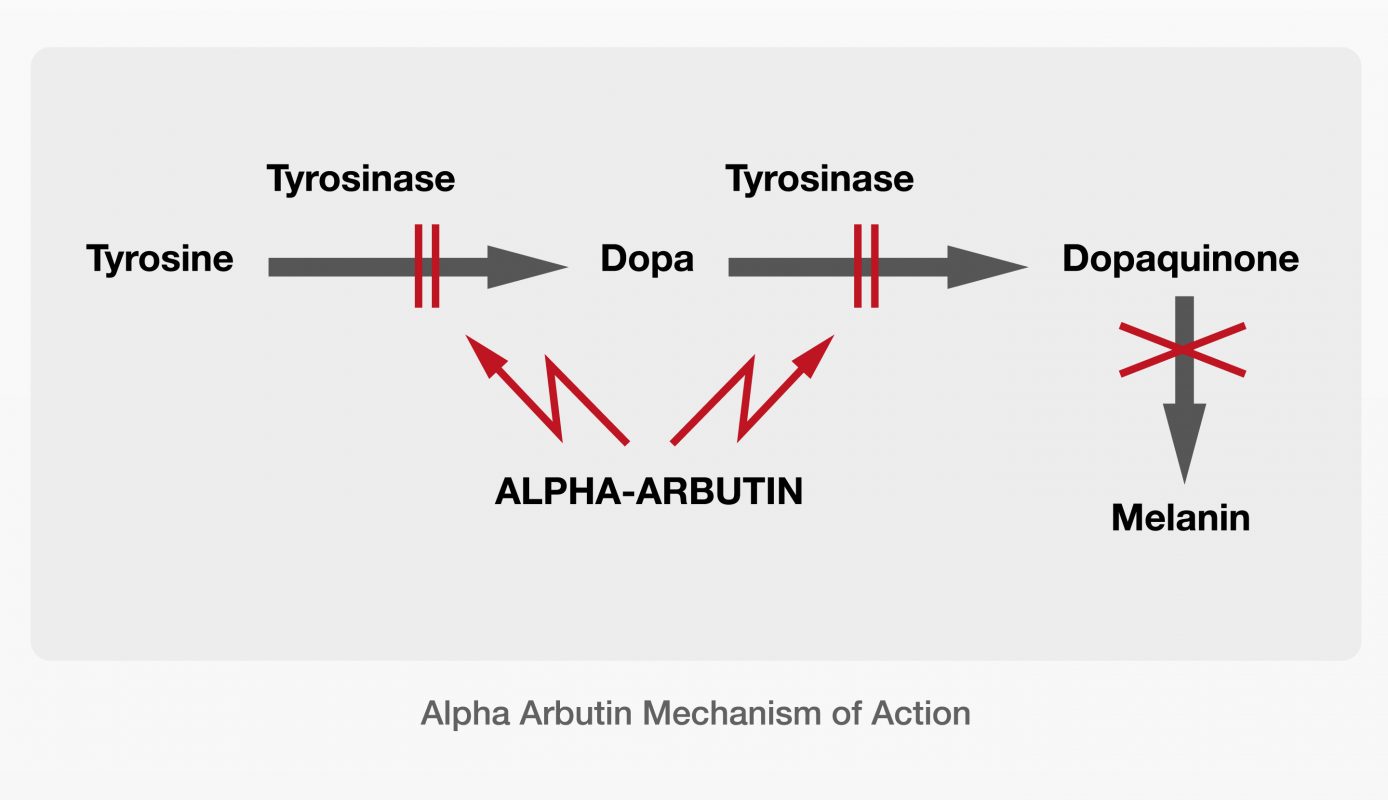
Hydroquinone vs Alpha Arbutin
Hydroquinone has long been considered the gold standard for the treatment of hyperpigmentation. While clinical studies report excellent depigmentation responses induced by 2% hydroquinone, it has also been shown to cause chronic adverse effects. These include exogenous ochronosis, cataract, pigmented colloid milia, sclera, and nail pigmentation, loss of elasticity of the skin, impaired wound healing and exuding an offensive fish odour. Hydroquinone can also cause DNA damage. These adverse effects limits the usage of hydroquinone.
Alpha-Arbutin has been proven to deliver a superior lightening effect without the toxicity and irritations associated with hydroquinone.
IN VIVO STUDY: SKIN-LIGHTENING EFFICACY
A skin-lightening study on 80 Chinese descent women demonstrated that an emulsion containing 1% Alpha-Arbutin resulted in a faster and more pronounced skin lightening effect after 1 month when compared with other commonly used single components at 1 % use levels. Below shows the classification of lightening single components according to the magnitude of their specific effect after 1 month (M0 = start, M1 = after 1 month) measured by chromametric studies.
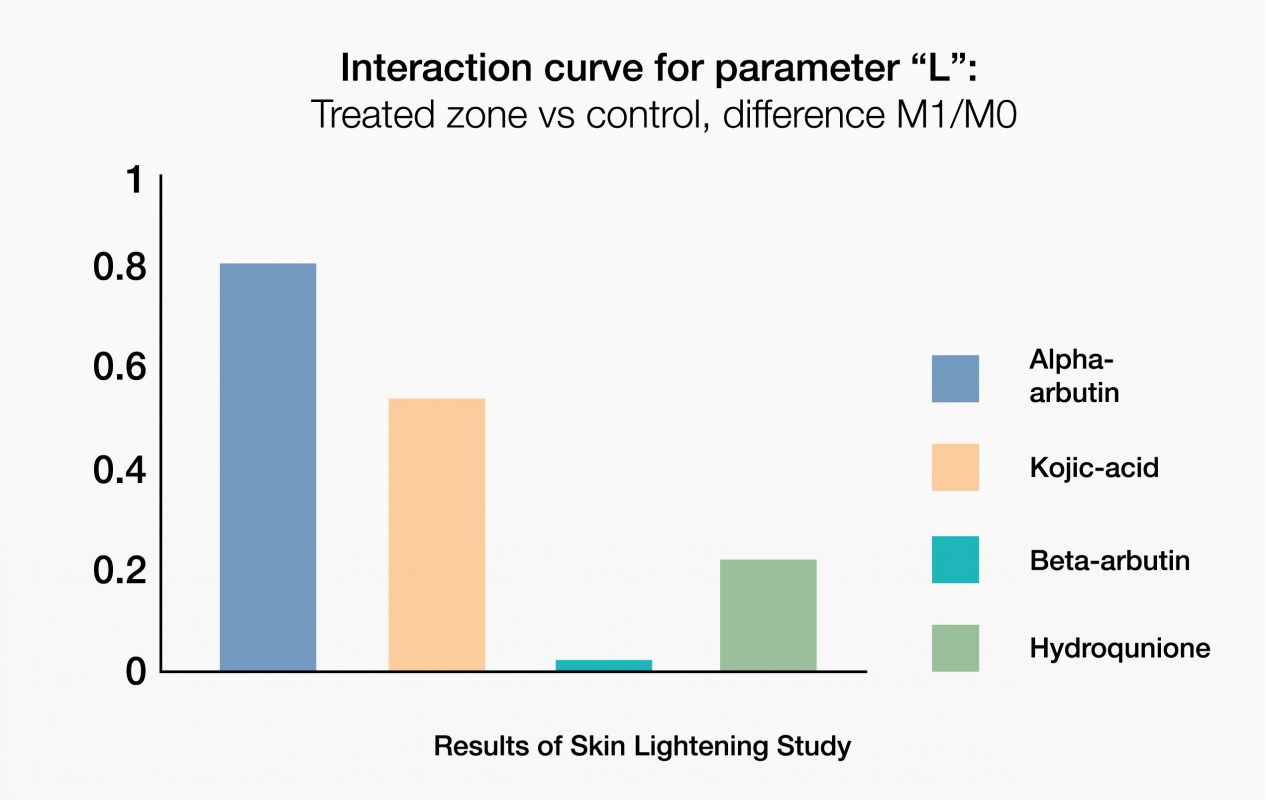
IN VIVO STUDY: LIVER SPOTS EFFICACY
In a 3 month study1 on 26 female volunteers 2% Alpha-Arbutin in a cream formulation minimizes liver spots more efficiently than Beta-Arbutin.
The figure below shows satisfaction quotients relating to the evaluation of the liver spot reduction.
